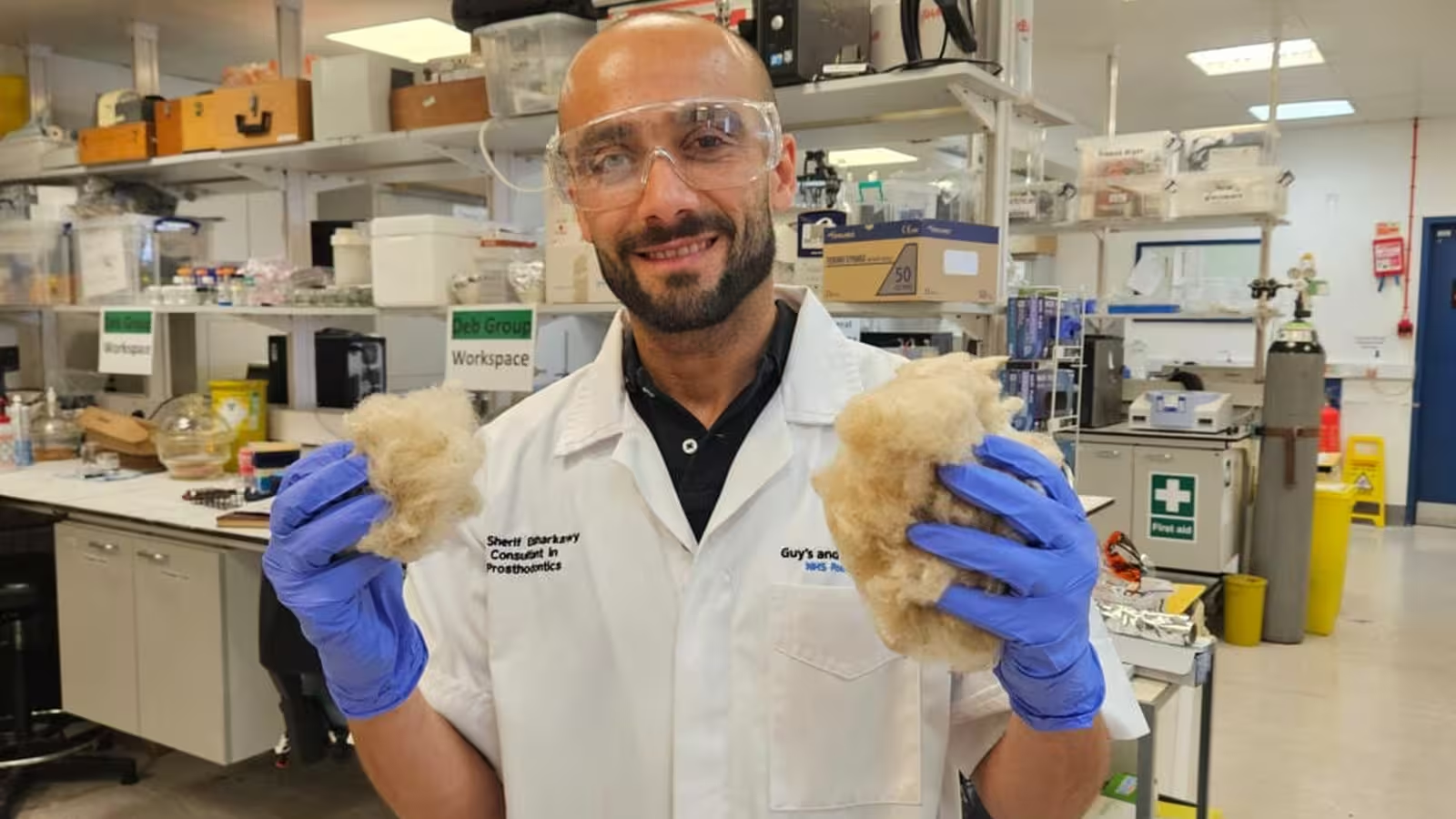5 Minutes
Keratin from Hair and Wool: A New Path for Enamel Repair
Scientists report that keratin — the structural protein abundant in hair, skin and wool — can form a protective, enamel-like coating on teeth and may halt tooth decay more effectively than conventional fluoride toothpastes. In laboratory experiments led by researchers at King’s College London, keratin extracted from wool produced a dense, crystal-like scaffold on tooth surfaces when exposed to saliva. That scaffold attracted calcium and phosphate ions and promoted the growth of a mineral layer resembling natural enamel, the hard outer tissue that protects teeth.
Unlike fluoride, which helps slow enamel demineralization and aids remineralization to a limited extent, keratin appears to provide a physical template that both shields exposed tooth tissue and encourages new mineral deposition. The researchers suggest that keratin-based formulations could not only prevent further erosion but also restore lost enamel and seal sensitive areas where nerves become exposed, reducing pain and the need for invasive restorations.
Scientific Context, Mechanism and Experimental Details
Biologically, tooth enamel is composed primarily of hydroxyapatite, a crystalline calcium phosphate. The keratin scaffold observed in the study mimics enamel’s hierarchical structure and color while serving as a nucleation site for hydroxyapatite growth. When keratin contacts saliva, it rapidly forms an adherent coating; the coating’s surface chemistry then concentrates calcium (Ca2+) and phosphate (PO43-) ions from saliva, encouraging layer-by-layer mineral accretion.
The published work used keratin sourced from sheep’s wool in controlled laboratory tests on extracted teeth and synthetic enamel models. Researchers report repeated cycles of mineral deposition over time, producing a progressively thicker, harder surface. The team highlights keratin’s sustainable sourcing: the protein can be recovered from biological waste such as wool and human hair, offering a biodegradable alternative to plastic-resin-based restorative materials.
Lead study contributors described keratin as a potential “transformative alternative” in restorative dentistry, noting that it may reduce reliance on toxic plastic resins and complement — or in some cases replace — existing fluoride-based preventive strategies. The investigators propose further preclinical testing and clinical trials to confirm safety, durability against chewing forces and long-term resistance to acid attack from diet and bacterial biofilms.
Implications, Challenges and Future Prospects
If validated in human trials, keratin-based oral care products could shift paradigms in preventive and regenerative dentistry by offering a biomimetic, sustainable method to rebuild enamel. Potential advantages include reduced sensitivity, fewer restorative procedures, and a smaller environmental footprint compared with conventional pastes and resin composites. The research team estimates that consumer products could appear within two to three years, contingent on regulatory clearance and industrial partnerships.
Remaining questions include large-scale manufacturing methods, allergenicity or immunogenicity of keratin sources, compatibility with fluoride or other active ingredients, and long-term wear resistance compared with native enamel. Related technologies in development include peptide-guided remineralization, nanohydroxyapatite pastes, and bioactive glasses — all aimed at promoting enamel repair without extensive drilling.
Expert Insight
Dr. Emma Lawson, a dental biomaterials researcher (fictional), comments: "Keratin-based scaffolds are an exciting example of biomimicry — using natural proteins to recreate the physical and chemical cues that drive mineral growth. The mechanism aligns with what we know about nucleation and crystal growth, but clinical translation will require rigorous testing for longevity and safety. If successful, this approach could complement existing preventive measures, including fluoride, rather than immediately replacing them."
Conclusion
Keratin extracted from hair or wool shows promise as a sustainable, biomimetic material that can form an enamel-like protective coating and stimulate mineral regrowth. Early laboratory findings suggest it could prevent and potentially reverse enamel erosion more effectively than fluoride alone. However, clinical trials, regulatory approval and manufacturing scale-up remain necessary steps before keratin-based toothpaste reaches consumers. The development points to a broader trend in regenerative dentistry: harnessing biological materials to restore function while reducing environmental impact.
Source: gizmodo


Leave a Comment